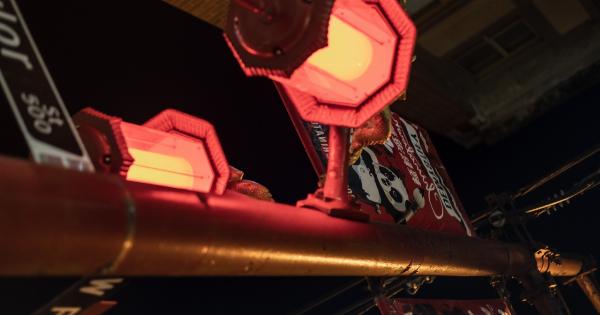Black nail lines, also known as melanonychia, refer to dark streaks or lines that appear on the nails. While they are often harmless, in some cases, these lines can indicate underlying health issues.
It is important to understand the causes, symptoms, and available treatments for black nail lines to ensure appropriate care and early detection of any potential problems.
Causes of Black Nail Lines
Black nail lines can occur due to various reasons. Some of the common causes include:.
1. Trauma
One of the most frequent causes of black nail lines is trauma or injury to the nail bed. When there is significant trauma, such as a hard blow or crushing force to the nail, it can lead to bleeding under the nail.
The blood collected can create dark lines as it dries, giving the appearance of black nail lines.
2. Melanocyte Activation
The cells responsible for producing the pigment melanin in our bodies are called melanocytes. Sometimes, these cells become activated and produce excess melanin in the nail bed, causing black lines on the nails.
This activation can be triggered by certain medications, hormonal changes, or underlying health conditions.
3. Medications
Some medications, such as certain antibiotics, antimalarial drugs, or chemotherapeutic agents, can cause hyperpigmentation of the nails. This hyperpigmentation may appear as black lines or streaks on the nails.
4. Ageing
As we age, the natural process of ageing can result in various changes throughout our body. It includes changes in the nails as well.
Over time, the nails can become more brittle and develop black nail lines due to the accumulation of melanin or other pigments.
5. Skin Conditions
Certain skin conditions, such as dermatitis or psoriasis, can cause nail changes, including the development of black lines. In some cases, these lines may be temporary and disappear once the underlying skin condition is treated.
6. Melanoma
Although rare, black nail lines can sometimes be a sign of melanoma, a type of skin cancer. Melanoma affecting the nail bed can cause the appearance of black or brown lines.
It is essential to promptly consult a healthcare professional if there are concerns about melanoma.
Symptoms of Black Nail Lines
The symptoms associated with black nail lines may vary depending on the underlying cause. Common symptoms include:.
1. Dark Streaks on Nails
Black nail lines are characterized by the appearance of dark streaks or lines running vertically or horizontally on the nails. The width, length, and number of lines can also vary.
2. Nail Discoloration
In addition to black lines, the affected nails may exhibit a change in overall color, ranging from pale yellow to deep brown. This discoloration may extend beyond the lines themselves.
3. Changes in Nail Thickness
Some individuals with black nail lines may notice changes in the thickness or texture of their nails. The nails may become thicker, brittle, or develop vertical ridges.
4. Pain or Sensitivity
If the black nail lines are a result of trauma or injury, the affected nail may be painful or sensitive to touch. This pain may be localized or extend to the surrounding finger or toe.
Treatments for Black Nail Lines
The treatment options for black nail lines primarily depend on the underlying cause. It is recommended to consult a healthcare professional or dermatologist for an accurate diagnosis and tailored treatment plan.
Some potential treatments for black nail lines include:.
1. Observation
If the black nail lines are minor and not causing any pain or discomfort, a “wait and watch” approach may be adopted. In some cases, the lines may resolve on their own without any intervention.
2. Trauma Management
If the black nail lines are a result of trauma or injury, managing the underlying cause is crucial. Applying ice, elevating the affected limb, and taking over-the-counter pain relievers can help relieve pain and reduce inflammation.
3. Cosmetic Treatments
If the black nail lines are primarily a cosmetic concern, various treatments can help improve their appearance. These may include nail polish, manicures, or artificial nail enhancements to mask the lines temporarily.
4. Addressing Underlying Medical Conditions
If black nail lines are caused by an underlying medical condition or medication, treating or adjusting the medication regimen may help reduce or eliminate the lines. This should always be done under the guidance of a healthcare professional.
5. Surgical Intervention
In cases where the black nail lines are suspected to be associated with melanoma or another serious condition, a biopsy or surgical excision may be necessary to perform a detailed examination and remove any potentially harmful tissue.
Prevention Tips for Black Nail Lines
While some causes of black nail lines cannot be prevented, there are several steps one can take to minimize the risk:.
1. Protect Nails
Avoid excessive or unnecessary trauma to the nails by wearing protective gloves while performing activities like gardening or cleaning, and taking precautions to prevent accidental injuries.
2. Maintain Good Nail Hygiene
Regularly trimming and maintaining the nails can help prevent a buildup of debris or microorganisms that can lead to nail infections or complications.
3. Avoid Harsh Chemicals
Avoid prolonged exposure to harsh chemicals, such as cleaning agents or solvents, by wearing gloves and using appropriate protective measures to minimize the potential damage to the nails.
4. Stay Hydrated
Proper hydration helps maintain overall nail health. Drink an adequate amount of water daily to ensure your nails remain hydrated and less prone to brittleness or breakage.
5. Regular Check-ups
Periodically visit a healthcare professional or dermatologist for routine check-ups and nail examinations. Early detection of any changes can aid in timely intervention and treatment.





























